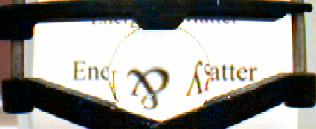 |
 |
|
|
| |
Lenses
Converging Lenses
When light passes through a converging lens the lens refracts the light back towards the axis of the system. This gives rise to four possible cases.
- If the light coming in is parallel, then the light is focussed by the lens to a single point known as the focal point or focus.
- If the light is coming from an object which is further away from the lens than the lens' focal length, then the light is still brought to a point. At this point a real image of the object is formed.
- If the light is coming from an object which is closer to the lens than the lens' focal length, then the light is no brought to a focus. The incoming lens is diverging too fast for the power of the lens to bring the light back to the axis. Instead the light continues to divarge, although at a slower rate. The diverging light rays can be imagined to originate from a point behind the lens (from the observers point of view). A virtual image is formed at this point, although it cannot be projected onto a screen.
- If the light is coming from an object which is at the lens' focal point, then the light neither converges nor diverges, but instead is formed into a parallel beam by the lens.
|
Try an exercise based on this tutorial
|
This demonstration shows the refraction of light (shown in blue) by a converging lens. You may move either the lens or the object by 'click
and drag' using the left mouse button. If the lens forms a vitual image, then the extrapolation of the light rays to the image are shown in pink. (If the picture becomes scrambled, click here to reset.)
Viewing the image
These two pictures show the images of the text on a sheet of paper when viewed through a lens. In the first image the paper is further from the lens than the focal length of the lens, and the image is real. Note also that it is inverted. In the second the paper has been moved to a point closer to the lens than the focal length of the lens, and the image is virtual. Note also that it is not the right way up.
 |
 |
A real image, which is inverted. This image is formed between the camera and the lens.
 |
A virtual image, which has the correct orientation. This image is formed behind the lens.
 |
|
|






